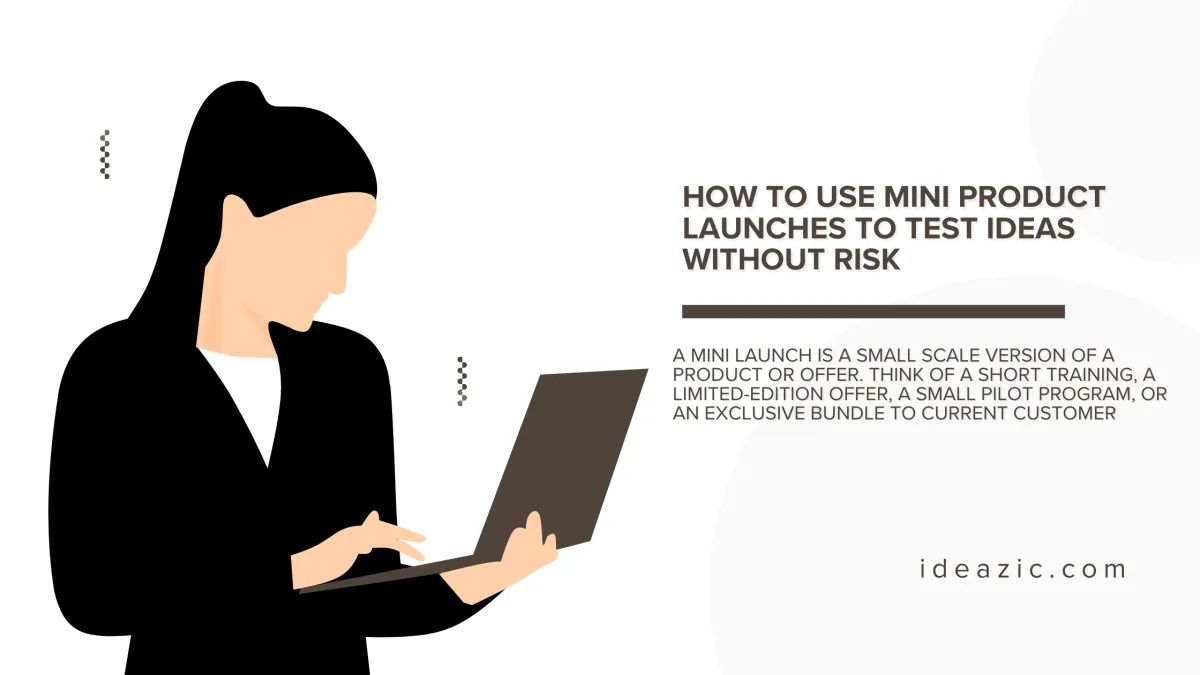
How to Use Mini Product Launches to Test Ideas Without Risk
How to Use Mini Product Launches to Test Ideas Without Risk
Introduction
You may have many ideas for new services or offers, but not all of them will hit.
Instead of going all in and risking time or money, a mini product launch lets you test the waters.
It’s low risk, fast feedback, and helps you see what resonates with your audience before committing.

What Is a Mini Product Launch
A mini launch is a small scale version of a product or offer.
Think of a short training, a limited edition offer, a small pilot program, or an exclusive bundle to current customers.
Why Mini Launches Work Better Than Full Products First
They cost less and take less time to set up
You get early feedback to improve before a big roll-out
You can build anticipation and test messaging with real people
You reduce the risk of creating something nobody wants
How to Plan a Mini Launch Step by Step
Choose one idea that you believe in and want to test
Define your target audience and reach out where they already engage
Create a simplified version of the product or offer just enough to deliver value and test interest
Set a small, time limited launch window or limited number of spots
Offer a bonus or incentive for early buyers or testers
Collect feedback, testimonials, and data during the mini launch
Where to Use Feedback and What to Do Next
Use feedback to fix features, clarify messaging, and improve positioning
Decide whether to scale up the offer, iterate, or pivot
Create marketing assets (testimonials, case snippets) from the mini launch to support your larger launch
Use what worked (best messaging, incentives, channels) to inform bigger offers
Conclusion
Mini product launches let you try, learn, and adjust without huge risk.
They let you test what your audience really wants, build confidence, and launch bigger with data behind you.
Reflection Question
What’s one offer idea you’ve been thinking about? Could you run a mini launch this week to test it with a few people?